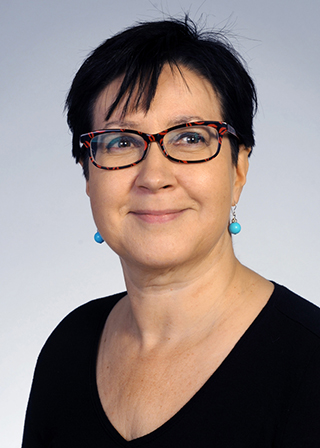ARCTIC STORIES: Finland has been building its northern identity for centuries. Arctic is a cultural definition, says Professor Maria Lähteenmäki, the editor of Footprints in the snow – The Long History of Arctic Finland.
Footprints in the snow is a collection of articles on the history of Finland’s Arctic science and policies. The texts show the way Finnish image of Northernness has changed in science and research and in political rhetoric and practice.
Maria Lähteenmäki, professor of history in the University of Eastern Finland, is a recognized scholar, who has broadened the perspectives of Finnish history research.
“I have a privileged position in Arctic questions. I am a researcher, but as an Arctic expert, I have also been member in various government organs, such as the Arctic Advisory Board. This has made it possible for me to see things from the government viewpoint. “
Dialogue between different fields of research and on the state level, with politicians, goes on throughout the book.

According to Maria Lähteenmäki Finland’s northern policies began in 1809. Until then Finland was a part of Sweden. When Finns started to construct their own northern approach, the torchbearers were historians and later biologists.
“We have always had scientists who have set their sights north. One of my motives for writing this book was the lack of knowledge about Finnish Arctic research. In the 19th century, the Finns explored the Polar areas, the Kola Peninsula, Lapland, and Siberia”.
“I believe that this is new information for many. People abroad know close to nothing of Finnish research into the North. They cannot read books written in Finnish. That is why I wanted the book to be available also in English. It includes some of the turning points and the central elements of Finnish views on Arctic questions, and on Arctic research conducted in Finland”, Maria Lähteenmäki notes.
She wanted to give people abroad an overview of where Finland is now in Arctic questions. She also saw a need to educate Finnish decision-makers.
“Our politicians do not know much about historical research or humanistic research. It was my own secret goal to get the ministers to read at least one short book, hoping that it could help them think in a longer perspective.”
Maria Lähteenmäki wanted to emphasize the long historical continuum of Finland’s Arctic visions. Moreover, she wanted to bring the viewpoint of humanities into the discussion. Research into Arctic questions focuses on biology, technology and other so-called hard sciences. Government funding is also steered towards those branches of science.
“We cannot compete with big countries that can invest enormous amounts of money in their technological research. Instead, we should study the people who live in the north. Our specialty could be research of people in their Arctic communities”, Maria Lähteenmäki urges.
“Research into humanities is also less expensive. I am proposing that such research could be one of the spearheads of international Arctic research.
“In this book I wanted to give a factual basis and some background information for politicians in Finland and abroad to help them understand what we have done here in Finland over the centuries. I wanted to prepare an information kit on our 100-year-old nation and the current chair of the Arctic Council”, professor Maria Lähteenmäki explains.
In the preface of Footprints in the Snow, she reveals another incentive.
“One source of personal motivation for this work has been the vision of the northern Arctic areas as a forum for peaceful coexistence. The Arctic is something that we all have in common.”
You can download Footprints in the Snow – The Long History of Arctic Finland in English here